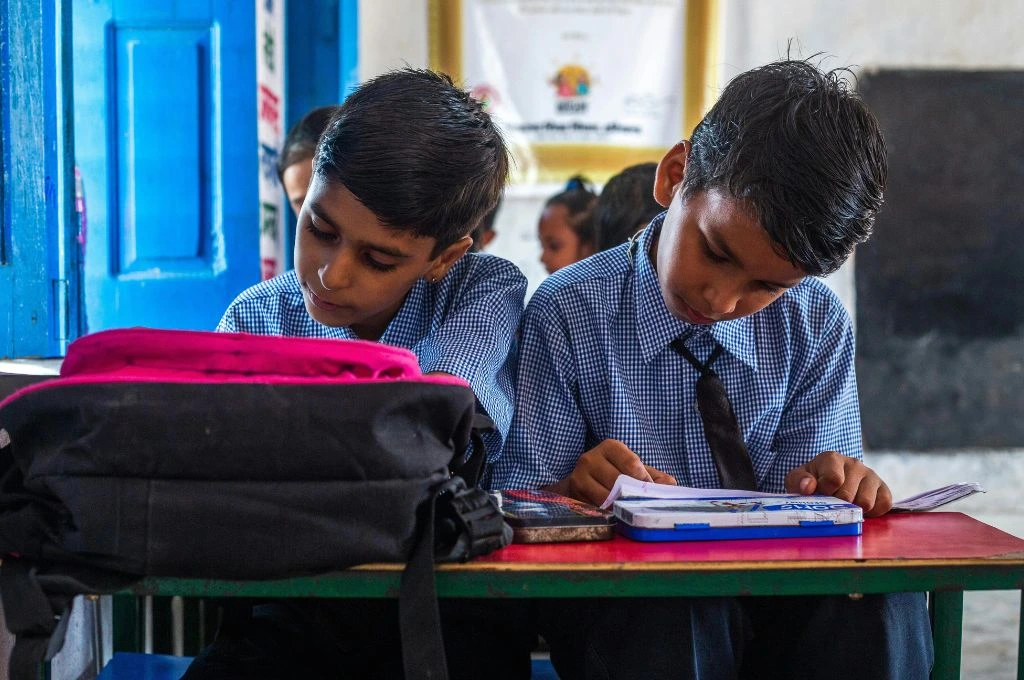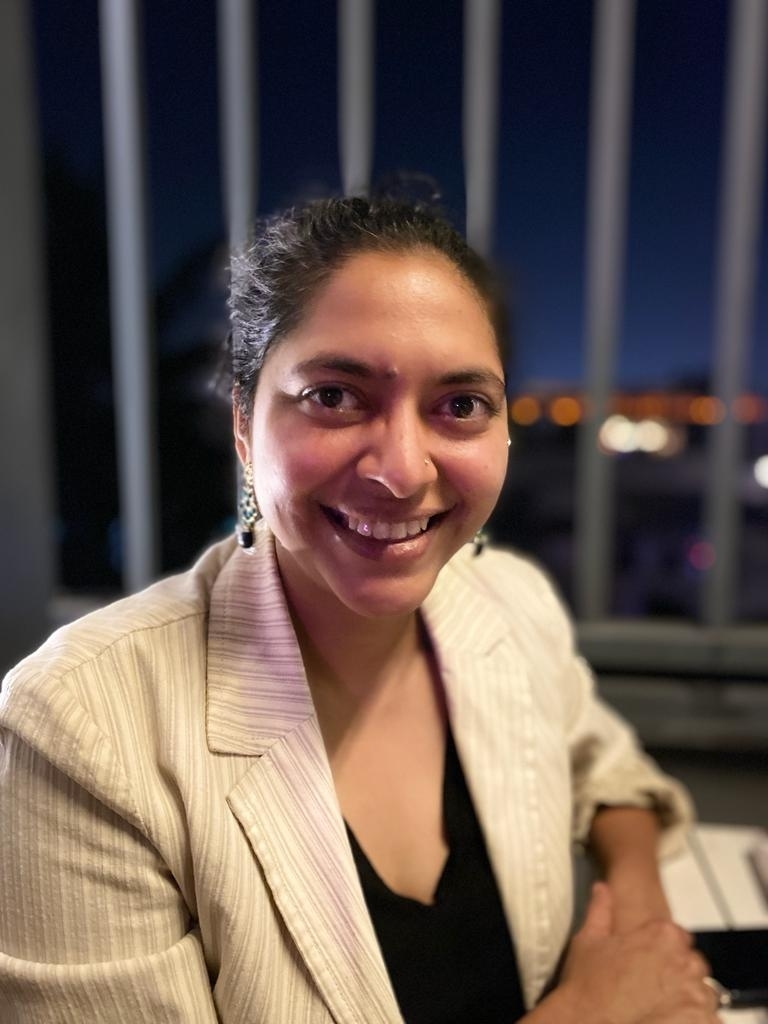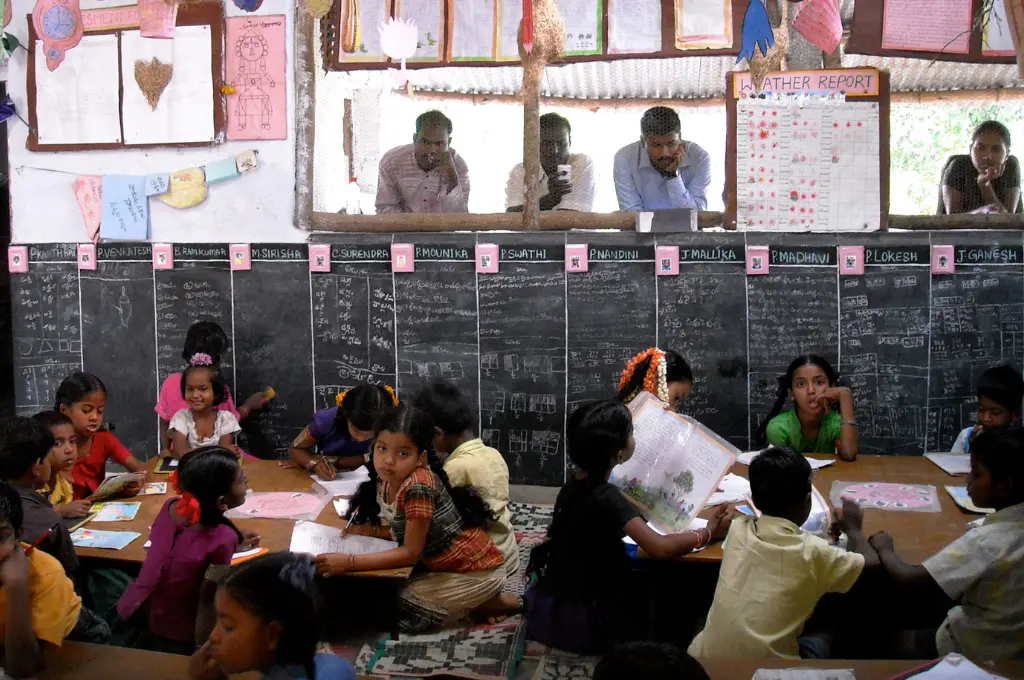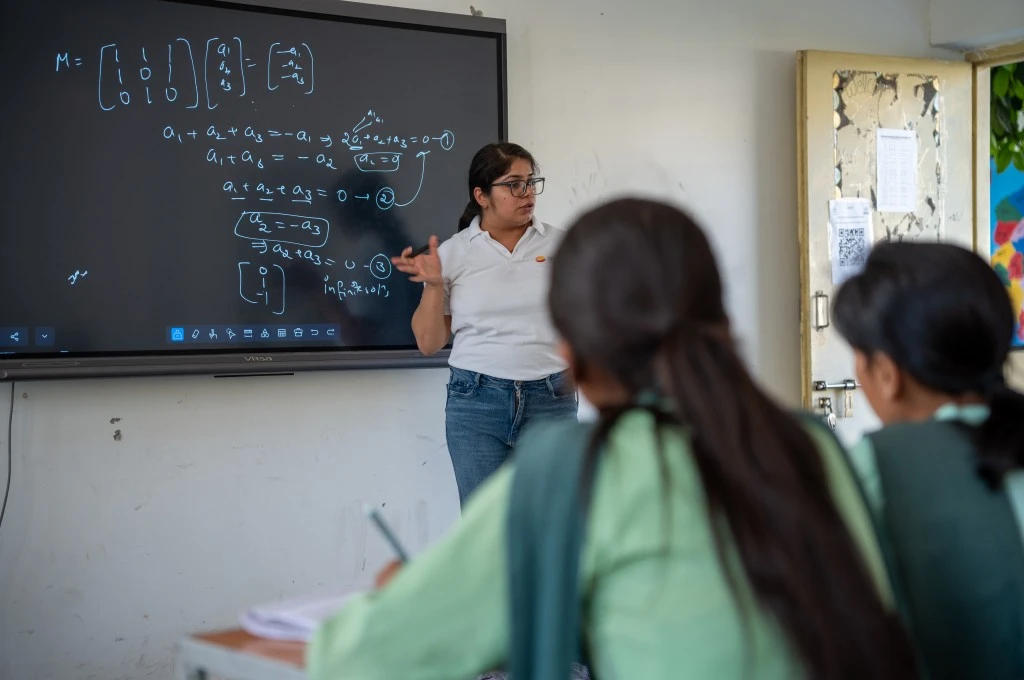Children and youth today are set to face a world of rising temperatures, erratic monsoons, and growing uncertainty. As the climate crisis worsens, there is growing recognition of the role that education can play in preparing young people to navigate this climate-altered reality.
At the Climate Educator Network (CEN), we have been working to identify and address gaps in climate education across India. In early 2024, we conducted a survey to understand young people’s perceptions of climate education. The study engaged 1,600 first-time voters—predominantly aged 18 to 22—from seven cities across four Indian states. Through surveys and focus group discussions, one insight emerged clearly: young people don’t just see climate education as important; they see it as urgent.
For instance, many respondents expressed concern about how unprepared they feel to deal with the crisis. Participants consistently highlighted the need for more practical, hands-on learning that reflects the environmental issues they are already noticing in their communities.
“Simply instructing people not to harm plants and trees may not be effective; what’s needed is action,” shared a Delhi-based student who participated in the survey.
However, climate planning at the national and state levels does not reflect this need for action, especially in education.

Current climate policies have little to no focus on education
To better understand the findings of the voter survey, we analysed the State Action Plans on Climate Change (SAPCCs) of Karnataka, Tamil Nadu, Maharashtra, West Bengal, and Delhi. In each case, we found very limited mention of climate education in the school system. For example, West Bengal’s plan does not mention young people or children at all. The Maharashtra plan refers to educational institutions, but only in the context of tree plantation drives and other extracurricular activities, not through curriculum changes. Tamil Nadu’s SAPCC mentions school eco-clubs but offers little clarity on how they function. These gaps show that while many states recognise climate action as a priority, they often leave education out of the picture.
Even, the National Action Plan on Climate Change (NAPCC) mentions the need for public awareness but lacks a clear strategy for climate education. It focuses solely on research and higher education, missing the opportunity to build a foundational understanding of climate change among schoolchildren. The upcoming NCERT curriculum, expected in 2026, is a significant milestone, but concerns remain about whether it will simply repeat past mistakes by staying too technical and theoretical.
The pedagogy is severely lacking
A look at textbooks across several state boards reveals how peripheral climate education continues to be in school curriculum. While topics such as greenhouse gases and the ozone layer are covered, the term ‘climate change’ is often mentioned only in passing.
Without contextualised content, climate education risks becoming a box-ticking exercise.
In fact, climate education is typically subsumed under broader environmental studies, with no dedicated focus or consistent framing. It is usually relegated to isolated chapters in science or social studies, with little attention paid to the various aspects of climate change—its causes, effects, and the complex ways it intersects with society and economy. Crucially, there is little to no exploration of its lived impact or the practical skills young people need to respond effectively.
For instance, there will be a lot of exercises at the end of a chapter—such as fill in the blanks and match the following—around objective questions such as ‘When was the Paris Agreement signed?’ or ‘What is the natural carbon cycle, and how does it relate to climate change?’ While this information is important, it is still just information. This method repeats the same pitfalls seen across other subjects, such as maths, science, history, and geography. There is an emphasis on information-heavy content and students are encouraged to learn about historical timelines or scientific theories without understanding how these concepts connect to their lived experiences. In climate education, this means students may be required to memorise definitions or laws but are rarely asked to apply that knowledge to analyse local weather patterns, reflect on how their community is affected, or explore possible solutions. This lack of connection makes learning feel abstract and divorced from real-world concerns.
Without contextualised content, climate education risks becoming a box-ticking exercise. And this approach is likely to be largely ineffective in preparing young people for their futures.
Climate continues to be seen as a science problem
Besides lacking a connection to everyday life, climate education is often filled with jargon and technical terms. This creates the impression that only scientists or ‘experts’ can teach it, leaving many educators feeling unqualified to do so.
We have seen this hesitation first-hand while working with TROP ICSU (Trans-disciplinary Research Oriented Pedagogy for Improving Climate Studies and Understanding), a partner organisation that curates educational resources for teachers. During these training sessions, many teachers said they didn’t feel confident teaching climate change. They felt the topic was too technical and something that should only be handled by experts.
By placing too much emphasis on expertise, we risk deepening the disconnect between climate change and lived realities.
As a result, climate change rarely enters the classroom as a topic that cuts across subjects or encourages broader discussion. There is no room to ask: How do we adapt? What does mitigation look like? How can we build resilience?
By creating disciplinary silos or placing too much emphasis on expertise, we risk deepening the disconnect between climate change and lived realities. It is important to recognise that climate change is not only a scientific issue but also a deeply social and political one. This means that it can be explored from the lens of any discipline. A sociology teacher could explore ideas of fairness and climate justice. A design teacher could help students come up with practical, eco-friendly solutions. For instance, Nature Classrooms—an initiative of the Nature Conservation Foundation—brings elements of nature learning into the environmental studies curriculum in primary schools.
We need to flip the approach
It is clear that we have a long way to go when it comes to climate education. But more than new syllabi or lesson plans, what is truly needed is a shift in how we think about climate itself. Climate does not operate in isolation; it influences every part of our lives—from what we eat to how we move, live, and work. And yet, in both policy and practice, it continues to be treated as a secondary concern.
Climate cannot be an afterthought.
Climate cannot be an afterthought, nor can it be treated as a standalone subject or the responsibility of a single ministry. Instead, we need to embed an environmental lens across all disciplines. This realignment is what will allow us to build a climate education framework that truly prepares children and youth for a changing world.
This shift must take place at multiple levels:
At the curriculum building level
1. Better integration
Climate education needs to move from the margins to the centre of how we teach and learn.
This integration must go beyond reliance on textbooks, awareness campaigns, and scientific principles. Drawing on non-traditional sources—such as games, comics, art, and movement—can ground climate education in lived experience, making it more accessible, engaging, and relevant for diverse learners. This could include using climate change to teach mathematical models, explore historical shifts, or examine how local economies and livelihoods are affected by environmental change. For curriculum designers, the core question is: To what extent are we willing to reimagine the status quo? The goal is to ensure that an environmental perspective becomes second nature—embedded across all areas of study and work, rather than treated as an optional add-on.
2. Making the curriculum more local and action-oriented
There is clearly a growing disconnect between how children understand their immediate environment. Reimagining education through a more localised and action-oriented lens can help bridge this gap. It also enables a shift beyond the ‘awareness’ phase of climate education—which often stops at disseminating information and memorising definitions—towards a hands-on, experiential learning model.
A compelling example of this shift is Marudam Farm School in Tamil Nadu’s Tiruvannamalai district. Moving away from formal government-mandated curriculum and standardised exams, the school adopts a democratically developed, activity-based approach to learning. Marudam has also created a comprehensive, freely accessible online curriculum on the climate crisis for students aged 16 and above.
In Delhi, the Climate Justice Library offers another powerful model. With more than 2,000 books on climate issues, the library is not merely a collection of resources. Through book clubs, meet-ups, and community gatherings, it serves as a vibrant space for reflection, dialogue, and youth-led mobilisation around climate justice.
At the policy and governance level
1. Better coordination between government departments
When states develop climate action plans, it is crucial that education is treated as a key component of the response. This means involving educational authorities, such as the State Council of Educational Research and Training (SCERT), from the beginning. But often, the teams working on environment and education do not communicate effectively. As a result of this gap, even if policies change, schools and teachers may be unaware of how to implement them or may not feel confident doing so.
Since education is a state subject, SCERTs play a central role in shaping curriculum and guiding textbook development. Whether textbooks are published by government or private entities, they follow the framework set by the SCERT in that state. This makes the SCERT a lynchpin institution, uniquely positioned to embed climate education within existing curriculum and ensure it reaches classrooms across the state.
The environment department, on the other hand, holds rich, context-specific knowledge and is well-placed to develop action-oriented, locally relevant content. By working together, they can co-create student-centric learning experiences that are both meaningful and rooted in local realities.
2. Linking education to jobs and industries
Another important way to mainstream climate education is by linking it to jobs and livelihoods. Most parents are not necessarily trying to raise activists; they want their children to have good, stable lives. But that idea of a ‘good life’ can include climate-friendly choices, especially if those choices lead to careers that are reliable, well-paid, and respected.
This means that we need more jobs in climate-related fields such as clean energy, sustainable farming, green construction, and circular waste systems. These roles must offer real opportunities for growth and security, comparable to mainstream jobs. We have already seen this happen when companies began adopting environmental, social, and governance (ESG) standards. Initially embraced by the top 100 companies, these frameworks quickly became industry benchmarks, triggering a surge in related job opportunities. A similar shift can occur in climate-related sectors, but only if governments lead the way—with the right policies, investments, and incentives that demonstrate to young people that these careers are real and worth pursuing.
Civil society organisations are playing a critical role but more needs to be done
The stakeholders most active in climate education today are civil society organisations (CSOs) and academic institutions. Much of the current momentum is being driven by academics concerned about the gap between theory and practice. The CEN also emerged from this space—as a collective of educators, researchers, and practitioners committed to exploring how climate thinking could be meaningfully embedded across learning spaces. We are doing this in several ways, including developing resources to help teachers bring climate into the classroom, collaborating with state governments to strengthen systemic efforts, and fostering spaces for peer learning and community-led action.
However, much remains to be done, particularly among education-focused CSOs. Many continue to prioritise infrastructure and foundational learning outcomes but often overlook the limitations of the existing curriculum. While strengthening reading and numeracy is essential, it must be paired with content that equips young people to engage with the world they are inheriting.
Given the spaces they operate in, CSOs are well-positioned to lead this shift. For example, they can anchor learning in students’ immediate environments through place-based methods that connect curriculum to local ecological and social realities. They can create informal spaces—such as libraries, clubs, or community gatherings—for dialogue and reflection and to complement formal learning. Additionally, CSOs can work with teachers across disciplines to co-develop classroom activities that promote problem-solving, critical thinking, and action without requiring technical expertise. Taken together, these strategies allow education to move beyond information delivery and become a tool for real engagement with the climate crisis.
Education is not simply a top-down process—it is shaped by culture, community, and context. Addressing complex challenges like climate change demands long-term, multi-level strategies that draw on local knowledge, bridge sectors, and invite shared learning. Otherwise, we risk a scenario where children can read fluently but are left unprepared to navigate a world of polluted air, uncertain water access, and ecological collapse.
To serve its purpose in the decades to come, education must evolve—equipping young people not just with knowledge, but with the tools to shape a more just, resilient, and sustainable world.
—
Know more
- Read this ground-up story that highlights the stark difference in how children from rural and urban Tamil Nadu relate to their local biodiversity.
- Watch The Children’s Scrappy News Service, a vibrant news-talk-game show run by kids, for kids, tackling real-world issues like climate change.
- Learn how India’s alternative schools are preparing students for climate challenges.
Do more
- If you’re a parent or teacher looking to bring climate education into classrooms, join the Climate Educators Network.






